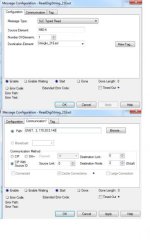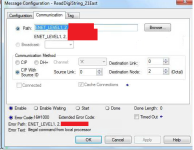Welcome to the forum!
That path will work with certain models of Compact Logix, because the ethernet port is integral to the PLC, and is designated as port "2".
The Control Logix is a whole different beast. The ethernet module will be in a different slot to the PLC.
Think about it this way. You have to get the message from your PLC's "brain", onto the chassis backplane, into the ethernet card's "brain", out the ethernet port on the front of the ethernet module, and then into the Digi One. Each of those "hops" require you to direct it on where to go.
Step 1: PLC to Backplane. Off the top of my head, I think the "backplane" port is 0. (correction: 1)
Step 2: Backplane into ethernet module. What slot is the ethernet module in? If it's Slot 5, your next hop is "5".
Step 3: Out the ethernet port on the ethernet module. Again, from memory, I believe that all of the Control Logix ethernet modules have the ethernet port as "1". (correction: 2)
Step 4: into the Digi One. This is where you set your IP address.
So, if my memory of all this is correct, your path would be 0,[ethernet card slot number],1,[IP address]. (correction: 1,[slot],2,[IP address]) Give that a try and see how you go.
The Compact Logix is much simpler, because all you have to do is point it out the onboard ethernet port (2), and into the Digi One (IP address).
[edit] daba is quicker than me, and has a better memory for port numbers








